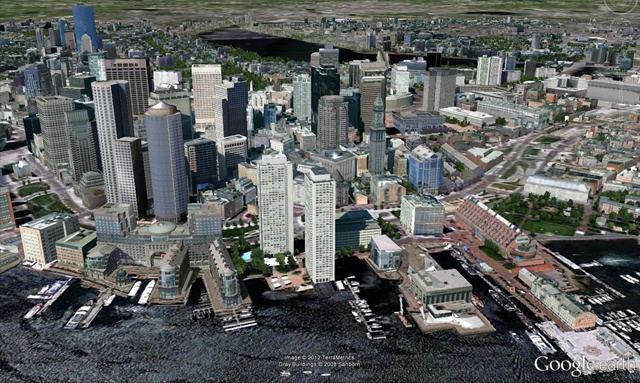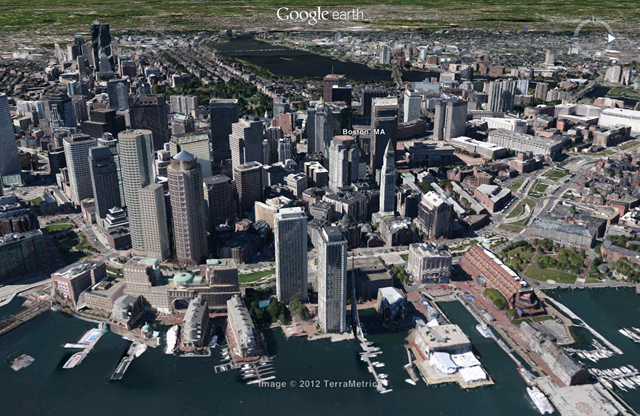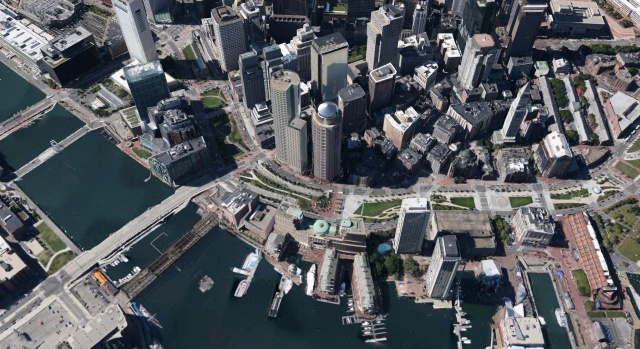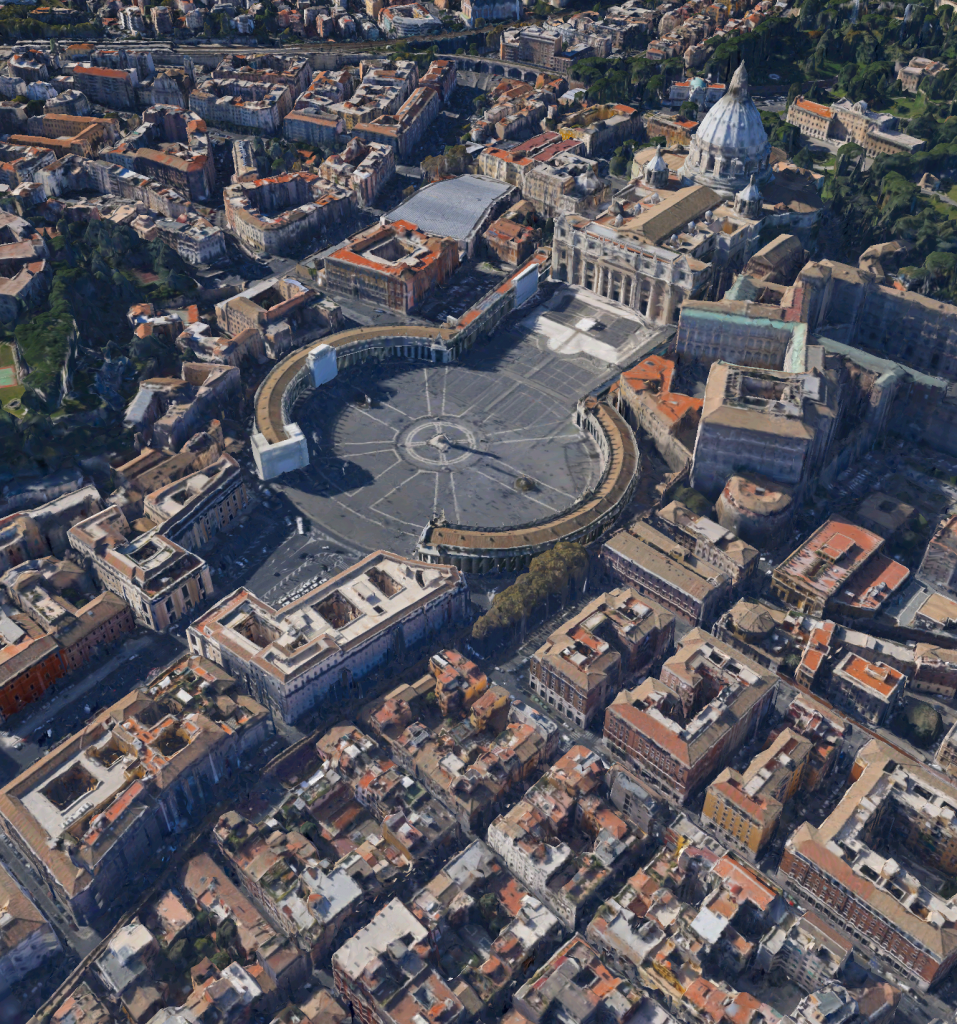The image above isn’t an aerial photograph. It’s a screenshot of the new 3D view rolled out recently in the latest version of Google Earth for the newer iPads and iPhones. I gather it is available for their Android app too, although it is not yet available on the PC version. This is downtown Boston, one of the first few cities for which this imagery has been released; you can click to enlarge it to have a look at just how realistic the imagery is. If you have access to a device that supports these 3D maps, I suggest you give them a try. They’re amazing.
Google Earth has had 3D buildings for some time now, but previously they were constructed from individually built computer models sourced from various contributors, including an army of amateur hobbyists. As I write, that is still what you’ll see on Google Earth for PC. The buildings seen above, however, are built using “stereophotogrammetry:” essentially, Google use photographic data to not only capture the faces of the buildings, but also to create a 3D model of the cities’ geometry. The photographs are then mapped onto the model, allowing a near-photorealistic 3D virtual city to be manipulated in real time.
This is a considerable advance on the old approach, as shown in the comparison below. The top is Google Earth for PC, which is still using the old 3D views, and the bottom is the new mapping on the Google Earth mobile app. Apple are apparently to use the same effect on their new native maps application, expected to replace Google Maps on the iPhone and iPad in coming months. The approach should also allow for far wider application of the 3D mapping, since it can be more fully automated than the old approach. (Currently on Google Earth it is just select cities: notably Boston, San Diego, Portland, San Francisco, and Rome). With Google and Apple competing for bragging rights, you can expect that within twelve months such mapping will be rolled out for many areas and across multiple platforms.


This is one of those occasions where incremental technology improvements have led to something that feels decisively new. Google Earth has been around since 2005, and it has had 3D buildings in it since 2006. But the level of realism provided here, combined with the more tactile manipulation possible on touch devices, makes these models a far more compelling way of exploring cities than the older Google Earth.
Is it actually useful though? I have mixed feelings. There’s probably a reasonable case to be made that Google’s Street View has more application to the day-to-day work of planners (and of course that, too, seemed pretty amazing when it was first released). But I can also see it would be a helpful tool for strategic planners and urban designers in visualising and communicating the impact of height controls, and better understanding where new buildings fit in to the existing form of a city.
In response to that, it might be argued that visualising the height and relationship of buildings from this kind of “Superman” perspective isn’t of much assistance. After all, it is the ground level experience that matters. Yet I think these kind of virtual cities have real value in helping us better understand the way the different bits of the city knit together by allowing us to visualise the larger structures underpinning places we know.
I say this because the places I found myself most interested in “flying over” were places that I knew. I have been fortunate enough to have visited Boston several times, and it was this city that I kept returning to in Google Earth. Doing so, I found myself better understanding the way the pieces of the city slot together. So, for example, I’d been through Beacon Hill and admired its very pleasant medium scale form, but you’re better able to appreciate how that form works as part of the city’s bigger system when you see how it slots in between downtown’s higher towers and the green space of Boston Common. Similarly, you get a whole different appreciation of the scar tissue left by the old I-93 around the city’s downtown (the interstate has been placed underground and replaced with the Rose Kennedy Greenway, which is visible in the foreground of the images above).
This increased ability to simultaneously visualise the larger structures of a city, while also zooming down almost to street level, may help mend long-standing shortcomings for planners. One of the weaknesses of planning as a discipline is that since about the 1960s it has become timid about large-scale planning. As Thomas J. Campanella points out, planning after Jane Jacobs switched to a very “bottoms-up” approach, afraid to work at larger scales after the debacles of 1950s and 1960s urban renewal. And while in doing so we have gotten better at the basics of urban design, the ability to match that local-scale planning with wider plans that shape the city as a whole has fallen away.
The updated Google Earth I think gives a hint of the kinds of city-visualisation tools that improved GIS technology will give the next generation of planners. It will be interesting to see if planners’ efforts at bridging the gap between small-scale place-making and the city-wide plan improve alongside such technology.

